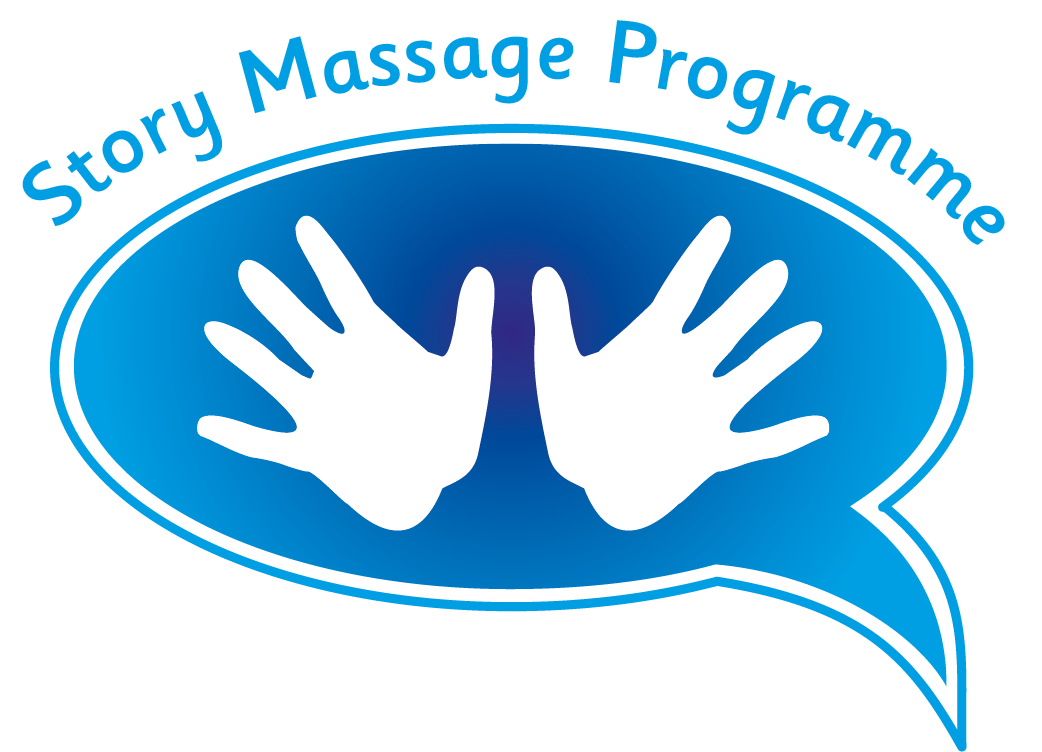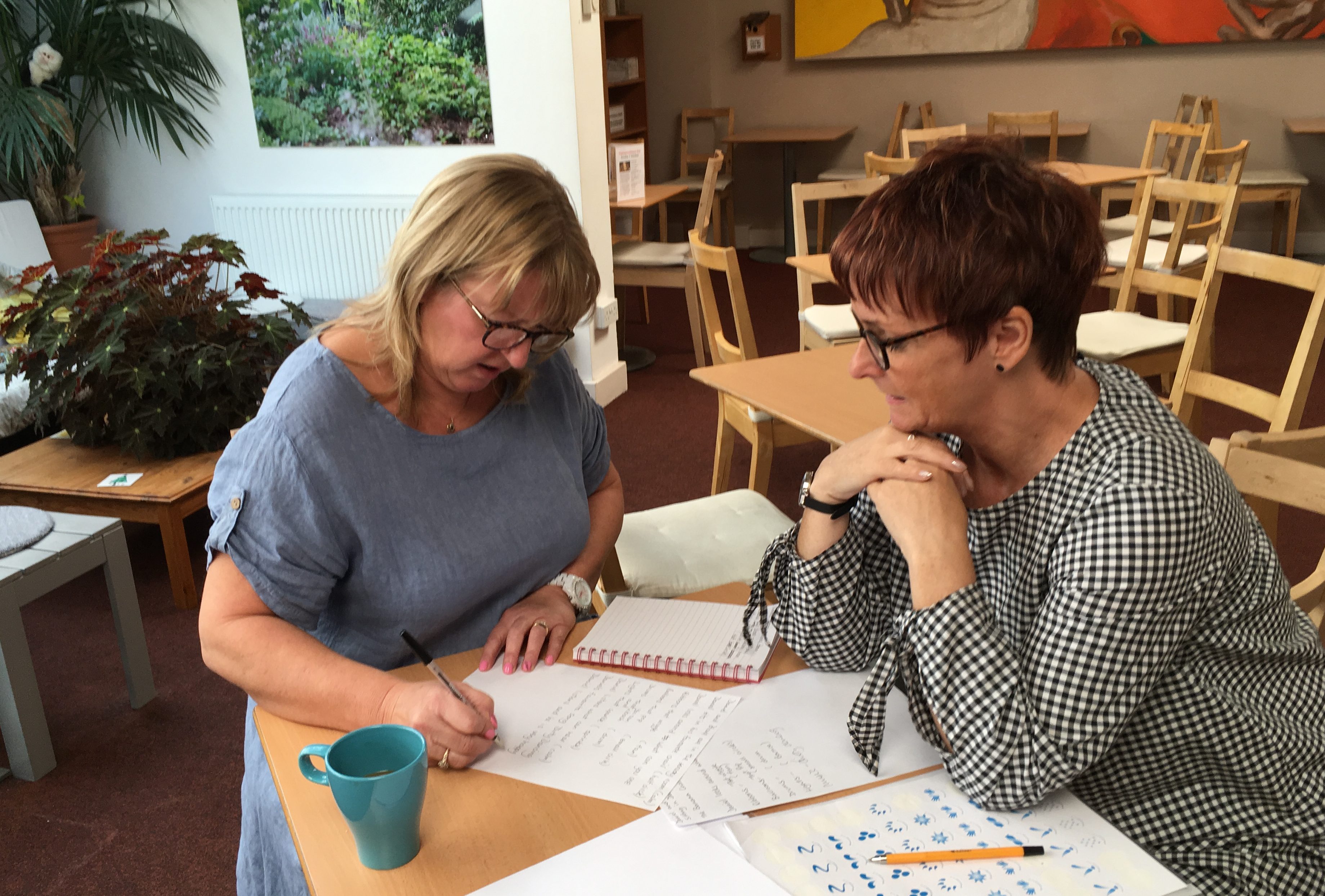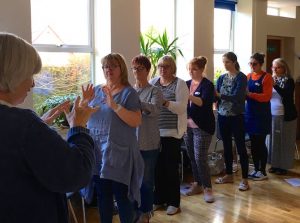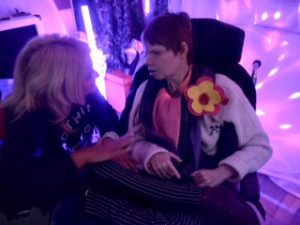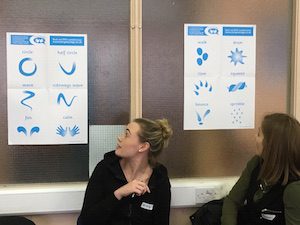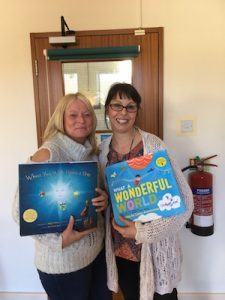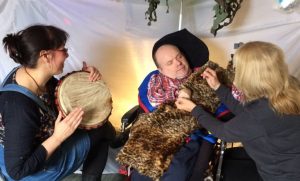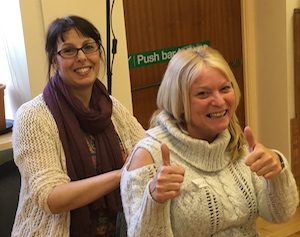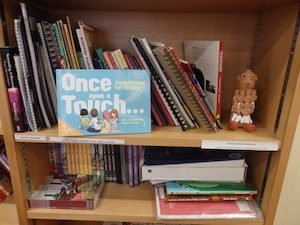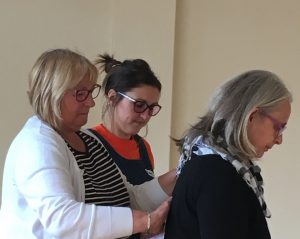Staffordshire Complex Needs Service are using the Story Massage Programme very successfully with adults with PMLD. “Our service users have responded really well to sessions,” explains Louise Molineux, Senior Day Service Officer, “The majority of our service users are non verbal so the programme offers a way of sharing stories in an inclusive way and we often personalise the story too.”
Introducing Massage Stories in the Complex Needs Service
There are now five members of staff trained in the Story Massage Programme and they are using it across seven services. Here is their advice for sharing the Story Massage Programme with adults with PMLD.
1. Set the scene
Create a relaxed, comfortable and undisturbed environment. Consider putting a ‘Do Not Disturb’ sign on the door. Once service users are settled then always ask permission to touch. “Acceptance of touch has increased hugely with our service users,” says Louise, “Previously, they would become very vocal or anxious if touched. Now some of them respond to the word ‘Story’ with an alert facial expression and increased arm movement.”
It helps to start the session with a calming story as this creates a quiet atmosphere. “Once the first story begins then we witness a sense of anticipation,’ says Louise, “It can be very powerful. One individual even started singing a song directly linked to the movements. This is amazing as she does not usually initiate verbalisation.”
2. Adapt the strokes
Don’t let wheelchairs stop you massaging people with complex needs. You can easily adapt the moves so they can be carried out on the arms and legs, or anywhere that is accessible and appropriate.
3. Work in small groups
The Story Massage Programme works best as an individual activity or in small groups for adults with complex needs. Each individual can then be supported on a one-to-one basis. “Story Massage can offer a safe space for individuals to communicate and feel valued,” says Karen Tyer, Senior Day Service Officer, “An example is one lady who has limited verbal communication and finds it difficult to interact with others. During a Story Massage session we were doing a massage about the sea. The women immediately made the connection between the sea and a boat and started to sing Row, Row, Row Your Boat. Everyone was really amazed by the improvement in her confidence and communication.”
4. Choose a leader
If you are using the Story Massage Programme as a group activity, then one staff member acts as the lead for others to follow. The lead person reads out the story and demonstrates the moves in the middle of the room or at the front of the group. The Story Massage wall charts are displayed on the walls and each staff member has a copy of the massage story so they can follow if needed.
5. Seek out opportunities to share massage stories
The programme is so versatile that it can be incorporated into other activities such as theme days, sensory stories and music. “We held a 1940s and 50s themed ‘Dancethon’ event to raise awareness for Dignity in Care,” says Louise. The complex needs team have also included Story Massage as part of sensory music sessions. They work with illustrated books and CDs, adapting the words as massage stories/songs. Favourites include Over the Rainbow and What a Wonderful World.
6. Record feedback
Always monitor the person’s response and share good news and positive feedback with others. Specific benefits that we have noted for our complex needs service users are:
- Acceptance of touch
- Direct eye contact
- Anticipation of the activity
- Initiation of story telling
- Happy, positive vocalisation
- Engagement
7. Create a resource folder
Gather all your stories and create a resource folder. This is helpful for staff and can be a good way of communicating with service users too. “One individual likes to have the titles of stories read to her,” says Karen, “She smiles, laughs, rocks and gains eye contact then chooses a story by saying ‘yes’. She also loves to look at the book and choose a story. It is worth spending time creating your own book of stories.”
8. Share the Story Massage Programme with carers
Demonstrate the Story Massage strokes during coffee mornings so carers have an option to do it at home. This works well because it can be done anywhere and no expensive resources are needed. “Our carers are very positive about the benefits at home,” says Louise, “It is now part of the bedtime routine for one young woman because it helps her to relax and sleep. Another has started singing at home, which is something very new!”
9. Think creatively
The Story Massage Programme can be used as a sensory cue for different activities. “One individual gets very anxious before her eye drops are applied,” explains Louise, “We have started using massage stories to soothe her before administration and afterwards as a sensory cue that is is finished. It has also worked well to help people adapt to a change of routine.”
10. Offer lots of praise
End each massage story by saying “Well Done” and offering some gentle applause. People always respond well to praise!
More about the Story Massage Programme
The Story Massage Programme combines the benefits of positive, respectful touch with the creativity and engagement of storytelling. Ten simple massage strokes form the basis of the programme. These strokes have a child friendly name, such as The Circle or The Sprinkle, and an easy to recognise symbol making it accessible for all. It is a fully inclusive activity, no clothing is removed and no oil is used. Sensory stories can be taken from our Story Massage book, adapted from favourite stories or songs such as What a Wonderful World. Or you could personalise stories and create your own.
Would you like to train in the Story Massage Programme?
Are you inspired by the way that the Staffordshire Complex Needs Service are using Story Massage with adults with PMLD?
If you would like to use the programme at home or work then you will love our flexible online course. All the information is here: Online Training Course.
You will learn how to share the ten Story Massage strokes, adapt familiar stories and even create some sensory stories of your own. Ideal for well-being coaches, therapists, teachers, SEN staff, support staff, Early Years practitioners, those working with people with additional needs, everyone with an interest in sharing positive touch activities with adults or children
